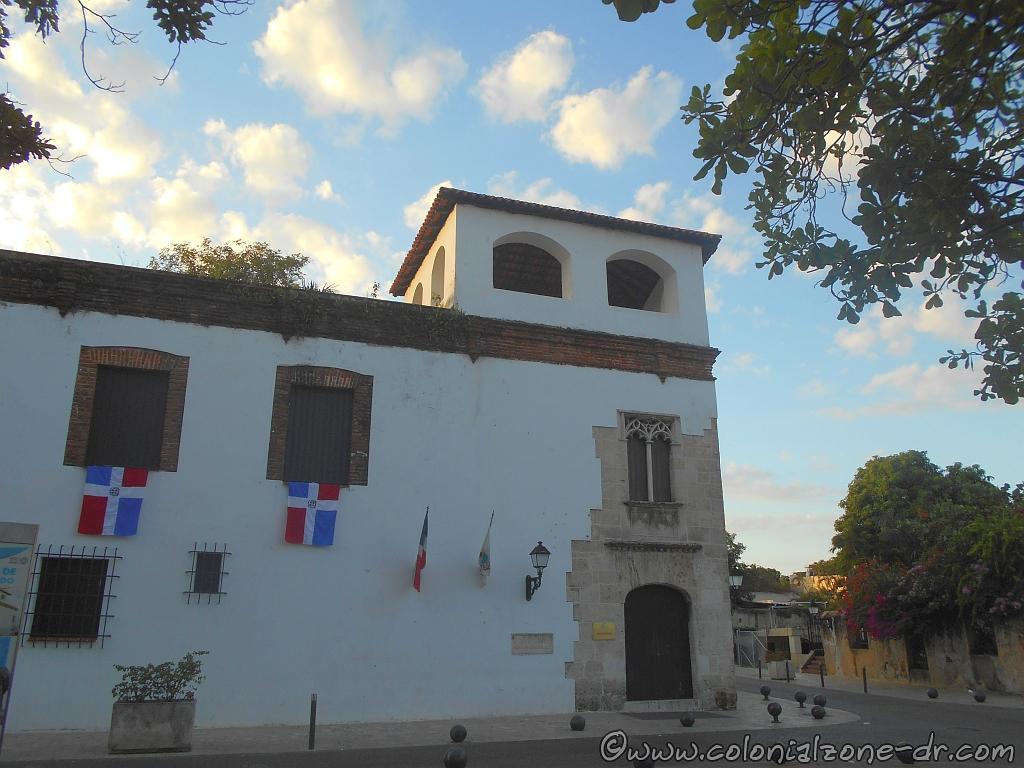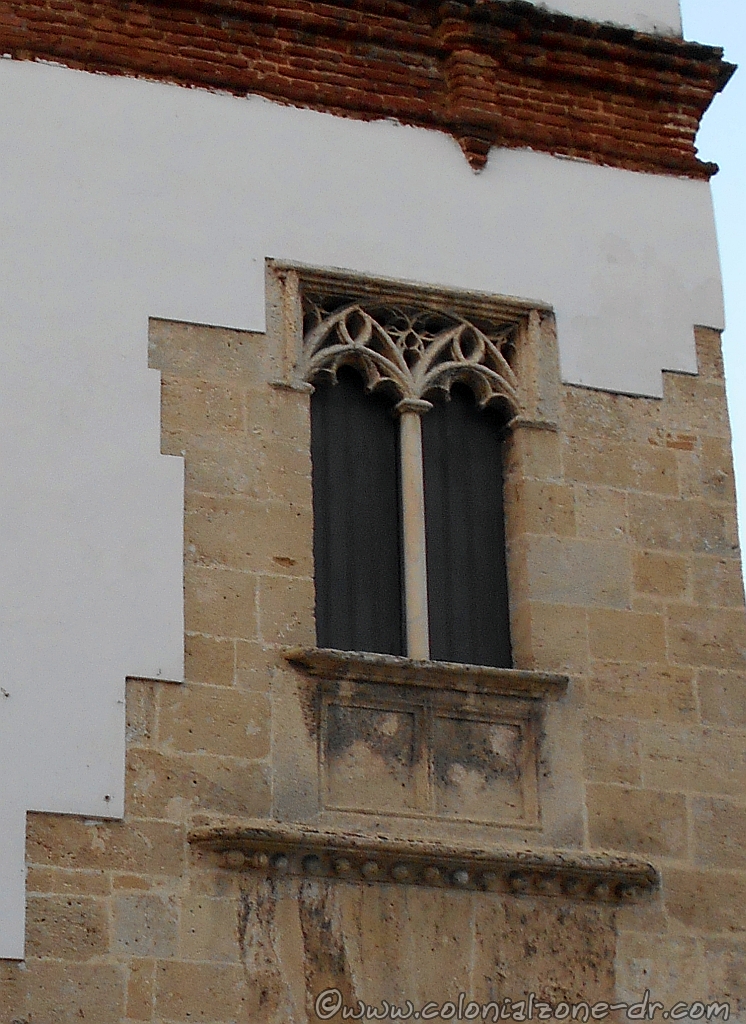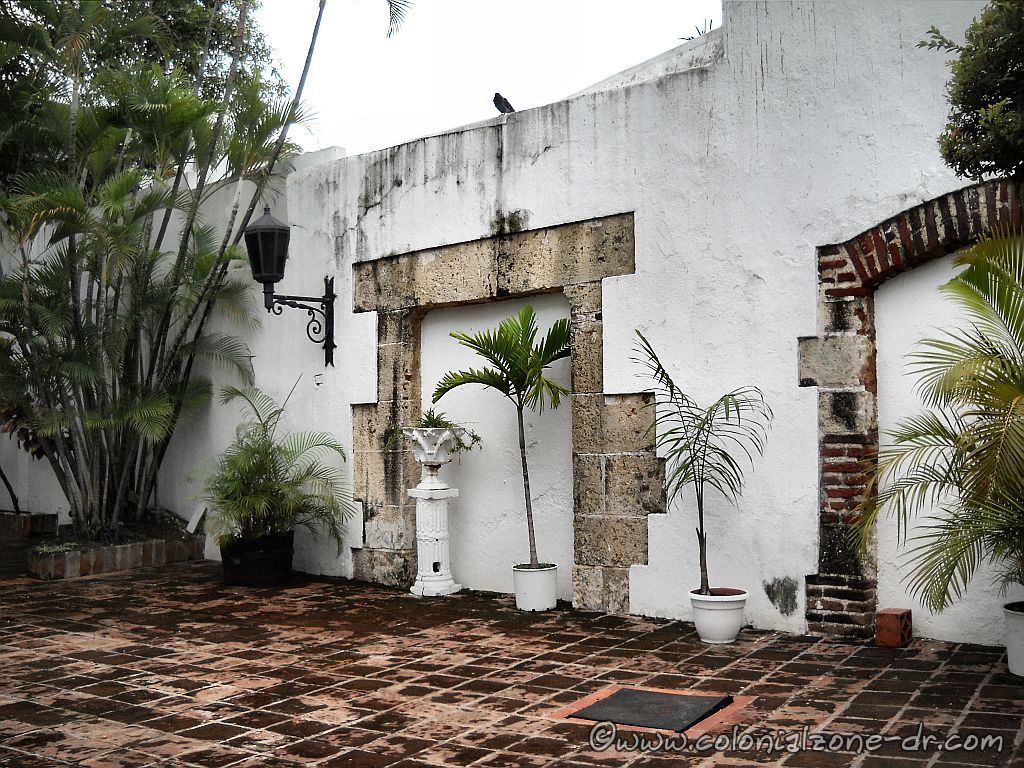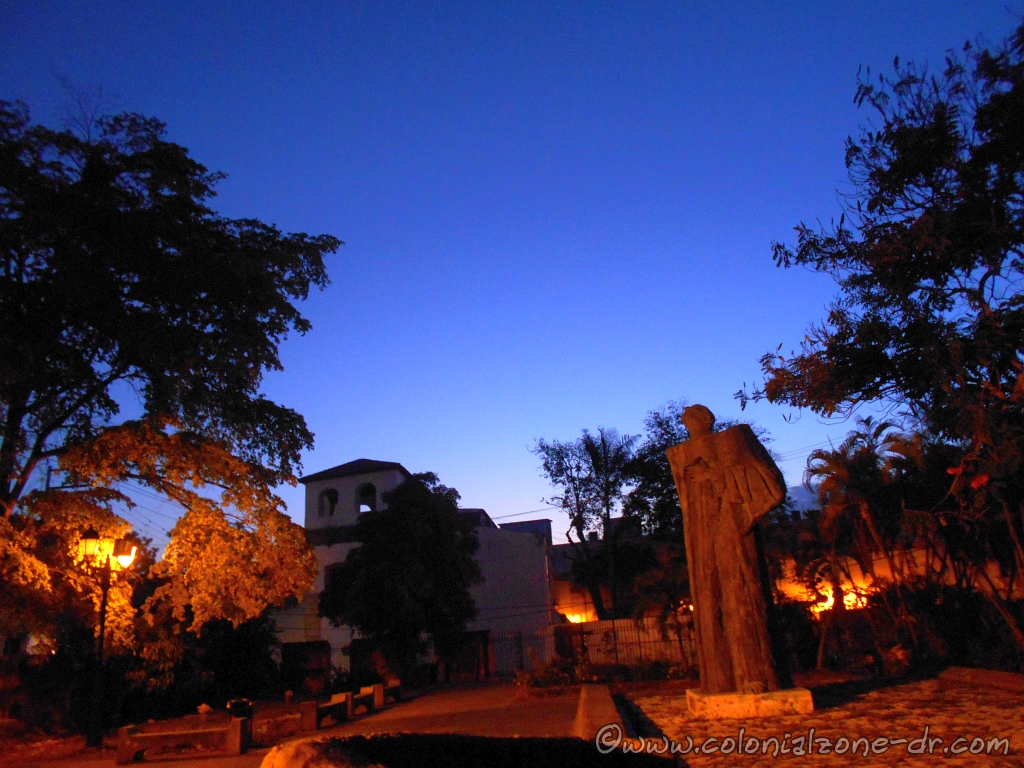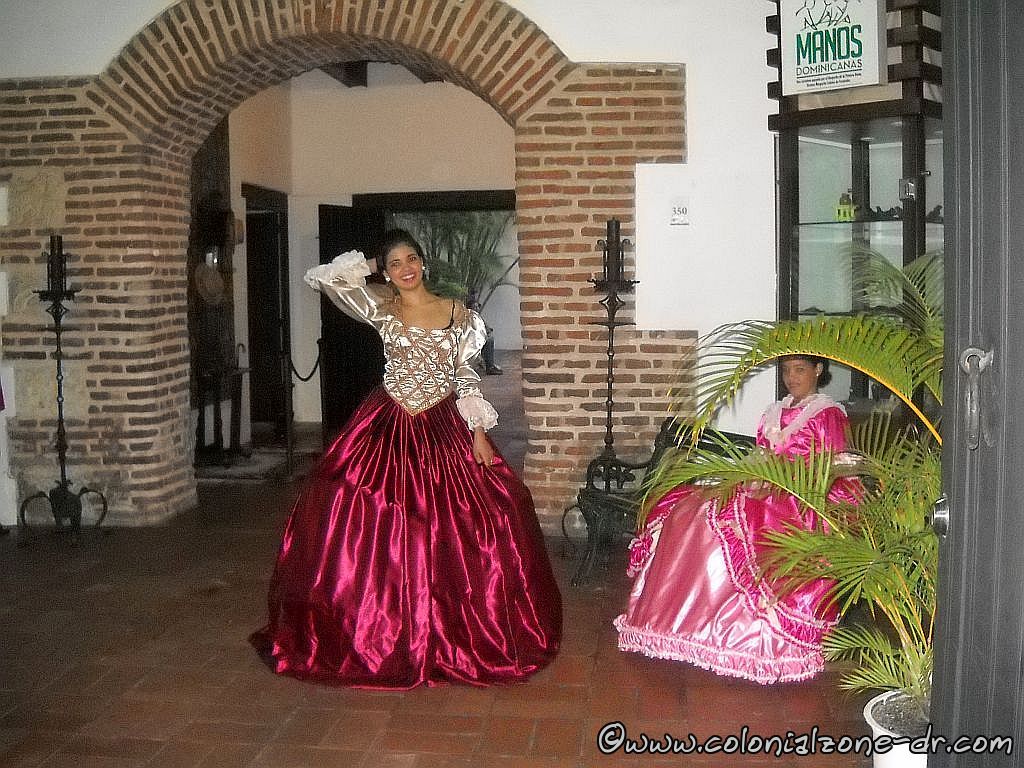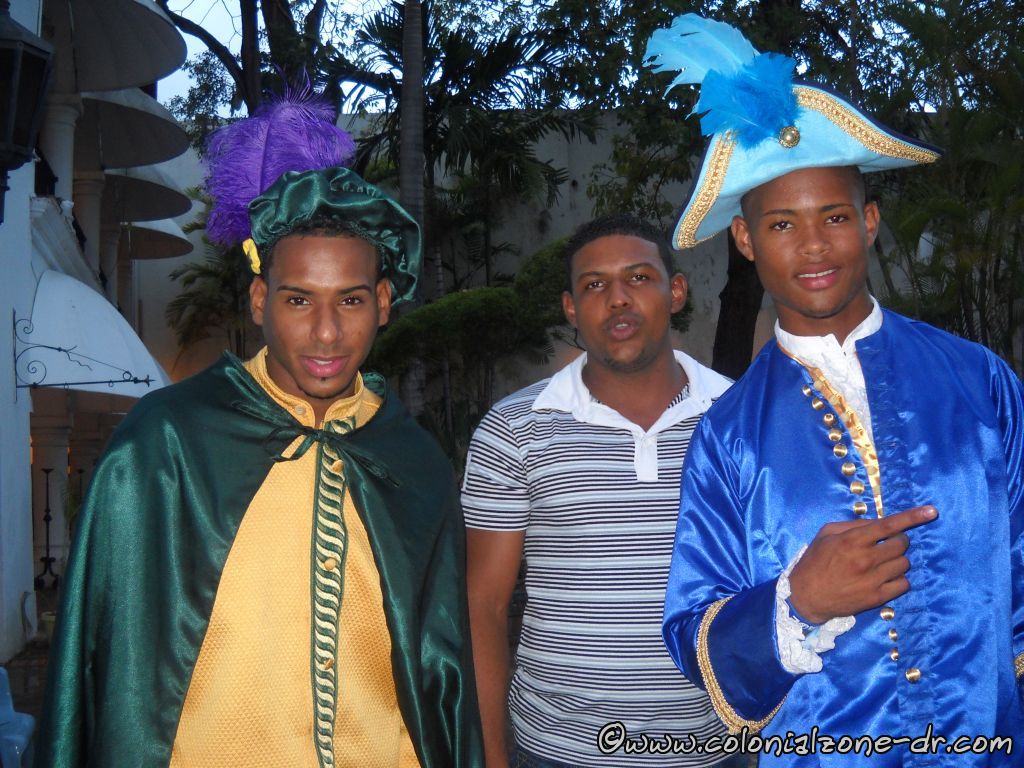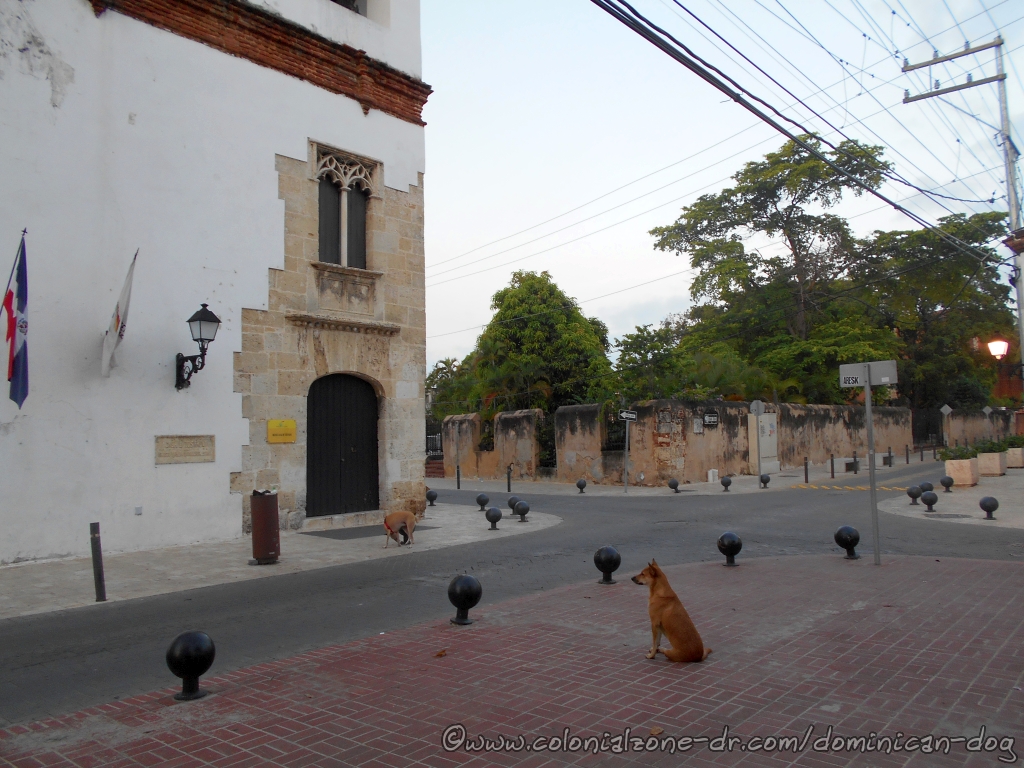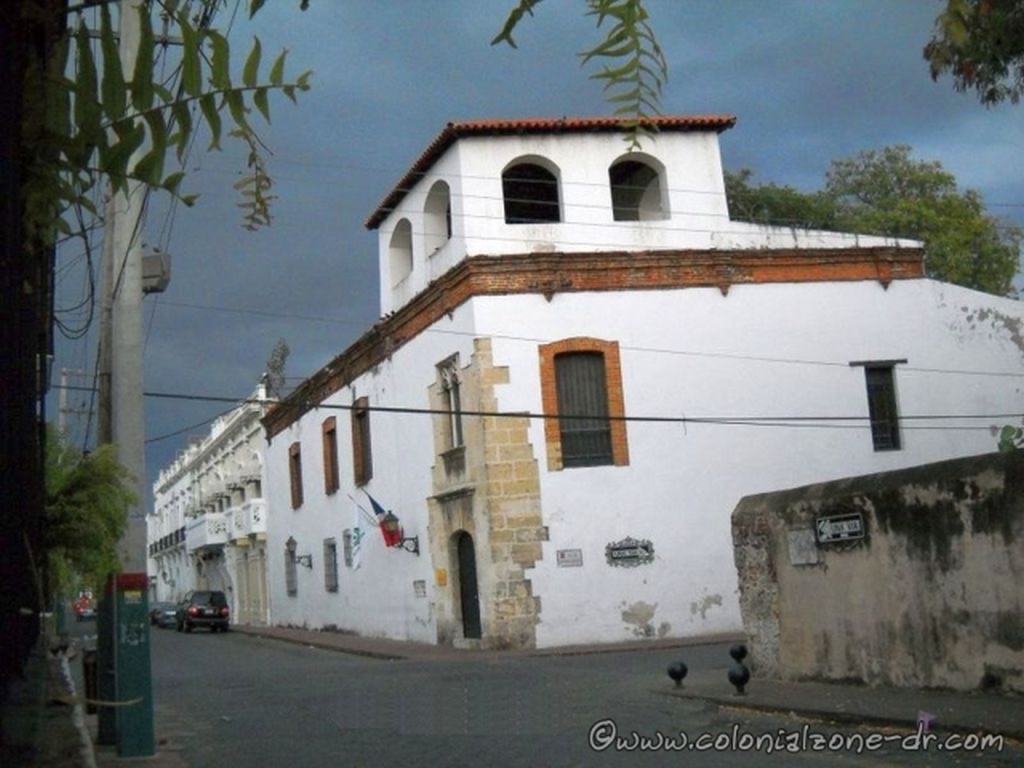Faro a Colón/ Columbus Lighthouse
The Faro a Colón/ Columbus Lighthouse is a massive building shaped like a cross located in Eastern Santo Domingo. It is both a Museum and Mausoleum, it is said to house the remains of Christopher Columbus.
The Faro or Lighthouse was built to commemorate the 500th anniversary of the arrival of Admiral Cristobal Colón / Christopher Columbus to Santo Domingo in Las Americas in 1492. It sits on a large lot of land with reflecting pools on either side of the entrance (the only time there is water in the pools now is if it rains). There is a sidewalk where you can walk completely around the monstrous building and take in the views of the Caribbean Sea and the city of Santo Domingo in the distance. There are also pathways on the property where you can meander about.
The Design | Inguration (Pope-Mobile) | The Entrance (Isabel la Católica) | Escudo de Armas | The Building and Light | Columbus Remains | Hours-Location |

The Design
This monuments design was chosen out of many applicants from the world over. The jury chose the design of Joseph Lea Gleave from England. His design was described as “an enormous cross-shaped structure designed to last for all times”. The jury described his design in this way, “THE DESIGN, MAKING WONDERFUL USE OF LIGHT, TAKES REFUGE IN A DIRECTNESS, SIMPLICITY AND FORCE WORTHY OF THE MONUMENTS OF THE AGES. THE DESIGN IS SYMBOLIC, BUT NOT TO THE EXTENT WHERE SYMBOLISM INTERFERES WITH THE SIMPLE BEAUTY OF THE WORK AS ARCHITECTURE. SEEN FROM THE AIR, OR FROM ITS SURROUNDINGS, THE SIMPLE MASS BECOMES A NOBLE ELEMENTAL FEATURE OF THE GROUND AND OF A CHARACTER WORTHY OF THE STEADFAST COURAGE AND FAITH OF THE GREAT DISCOVERER IT COMMEMORATES”.

Inguration
The Columbus Lighthouse was inaugurated October 6, 1992 by President Joaquin Balaguer Ricardo. At the commemoration ceremony, the remains of Columbus were carried from the First Cathedral of the Americas through the streets, across the river and to their new resting place inside this enormous monument.

The ceremony was even attended by Pope John Paul II. The Popes Pope-Mobile / Papamóvil can be seen parked outside of the entrance to the Faro.

The Entrance
A statue of Queen Isabel la Católica marks the entrance to the Faro as you approach on Ave. Mirador del Este. Queen Isabel la Católica, Queen of Castile, commissioned Cristobal Colón voyage to the New World.

There is a large paved walk and grand stairs that lead up to the entrance of the Faro. The walkway is lined by many different countries’ flags waving in the breeze.

Escudo de Armas
On the entrance walkway you will notice the Christopher Columbus, Coat of Arms / Cristóbal Colón, Escudo de Armas. It is divided into 4 sections.
1) A castle of gold / Un castillo de oro
2) Lion crowned in gold with silver background / En campo de plata un leon rampante de gules coronado de oro
3) Islands of gold in a blue background / En campo de azur unas islas de oro
4) Five gold ancors in a blue background / En campo de azur cinco ancoras de oro, puestas en aspa.
Entado en punta de oro con una banda de azur y el jefe de
gules.

Climbing the stairs to the front gate there is a bust of President Joaquin Balaguer watching over all who enter.

The museum and chapel inside are a repository for numerous documents and artifacts associated with the early Spanish Colonial times. There are rooms dedicated to the Latin America Countries displaying many different artifacts and items of interest from the represented country.

The Building and Light
The Faro a Colón is 693ft (211m) long East to West and 195 long feet North to South. This massive monument is 45 feet high. It was built in the shape of a cross at a 45-degree angle. It has 4 bronze lions and the feminine figurine that represents the Dominican Republic.

The building, in my opinion, is quite ugly from the outside. Its huge grey shape can be seen from a great distance even high in the air. The most impressive part of the structure is when they turn on the 157 beams of light illuminating the night sky with its brilliant cross. Now, the light is only turned on for special occasions because of the cost and problems with the electricity in the country. The light, it is said, can be seen in Puerto Rico on a clear night. It is very beautiful and quite impressive to see this cross-shaped beam of light shining in the night sky.

The exterior of the building has a representation of 43 different countries. Most are countries in The Americas but there are others included.
Nicaragua. Panama. Paraguay. Peru. Republica Dominicana. Puerto Rico. San Cristobal. Y Nevis. Republica Dominicana. Santa Lucia.
San Vincent. Y Las Granadinas. Suriname. Trinidad Y Tobago. Uruguay. Venezuela. España. Portugal. Italia. Inglaterra. Japon. Aruba. Curazao. Republica Dominicana. Mexico. Jamaica. Honduras.
Haiti. Guyana. Guatemala. Granada. Estados Unidos. El Salvador. Ecuador. Dominica. Cuba. Costa Rica. Colombia. Chile. Canada. Bolivia. Brazil. Belice. Barbados. Bahamas. Argentina. Antigua Y Barbuda. Republica Dominicana.
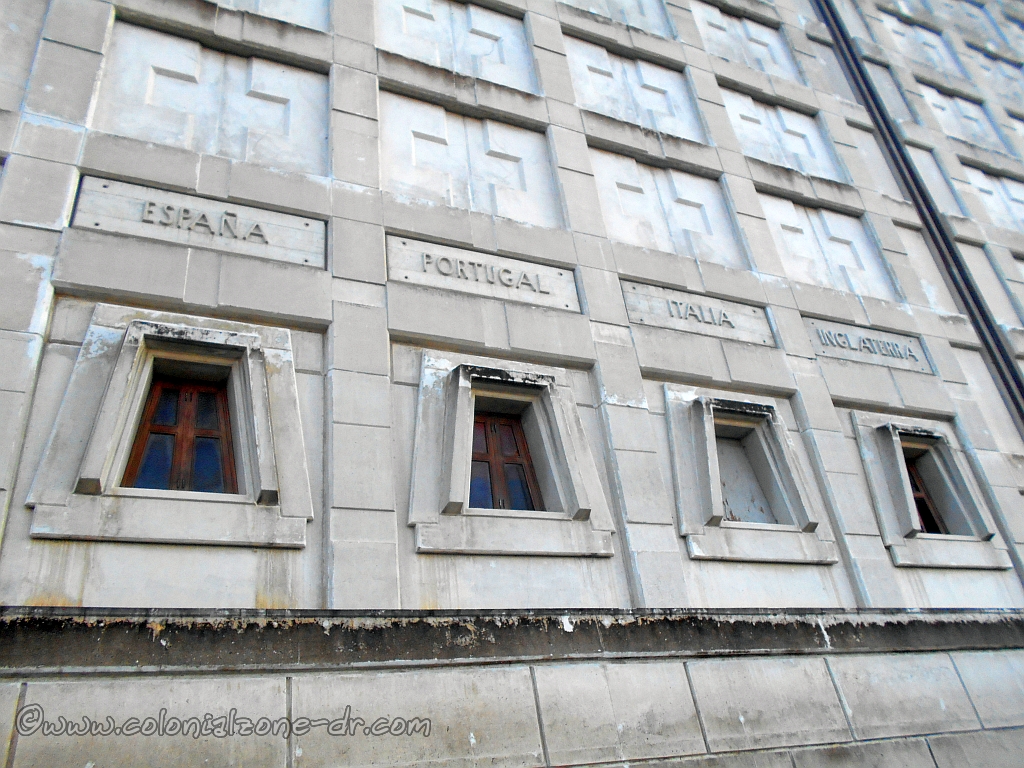
43 countries (48 blocks).
*Republica Dominicana holds 4 blocks.
*San Cristobal Y Nevis (Saint Kitts and Nevis) is one country with 2 blocks.
*San Vincent Y Las Granadinas is one country with 2 blocks.
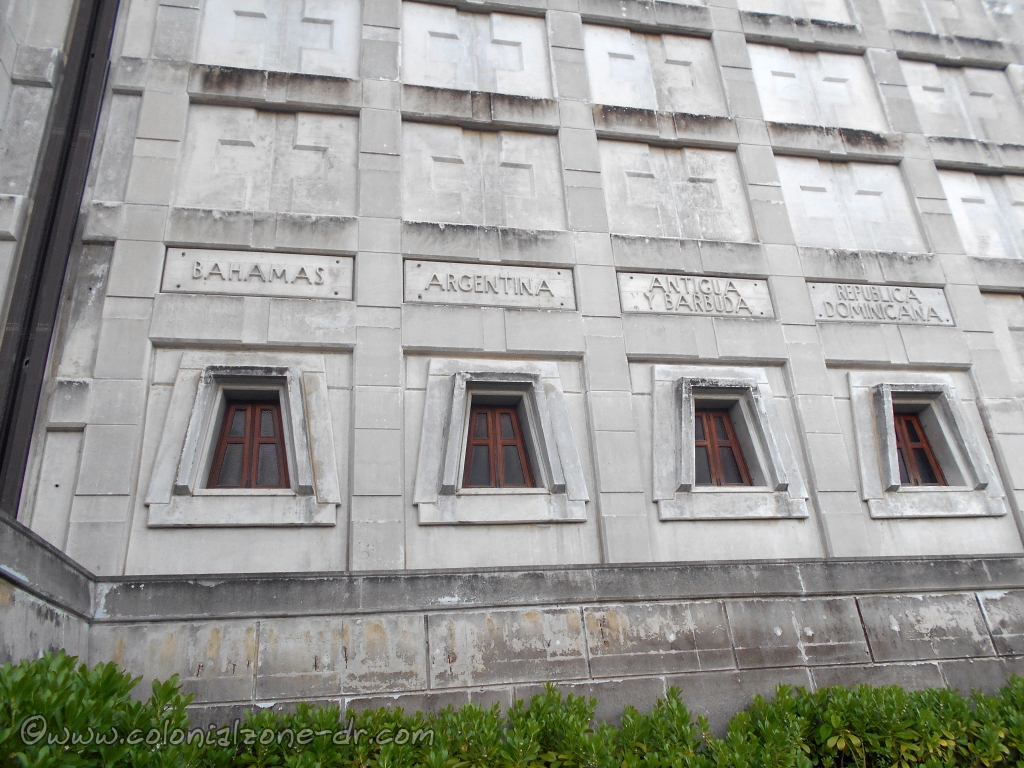
Columbus Remains
There is still much debate on whether the remains located in the Faro really belong to Christopher Columbus. Spain also claims to have his remains. Neither country wants DNA tests done on the bones in their possession so it will remain a mystery. To read more on this
Columbus Remains Found In Spain – CBSNews
Another interesting read in detail about the Faro and more. Cowan-Richter-The Faro a Colon.

Hours-Location
The lighthouse was remodeled in August 2008 and most recently in 2018. The streets have been repaved, the interior has been cleaned and bad floors replaced. New lighting has been installed.
Hours: Tuesday to Sunday 9am to 5pm (there is a small admission fee) Phone – 809-591-1492
Directions: Ave. Mirador del Este, Santo Domingo Este. It is about a 30 minute walk from Plaza España in the Colonial Zone.


